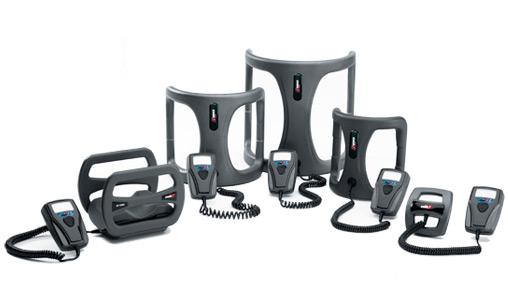In 2005 there was an estimated 765,000 foot fractures in the United States. Of these, 10% or 76,500 were nonunion metatarsal fractures, which can be costly and complicated to treat. There is a need for treatment options in podiatry for nonunion foot fractures. [5] Bone growth stimulators are an appealing option due to the cost effective and non-invasive nature of the therapy.
Dr. Zigonis, a fellow of the American College of Foot and Ankle Surgeons as well as a Diplomat of the American Board of Podiatric Surgery has used bone growth stimulators (BGS) in numerous reconstructive and revisional foot and ankle surgeries. Dr. Zigonis discusses his success with the use of BGS, the DJO CMF OL1000 in patients with nonunion fractures. According to DJO, studies showed a 60.7 percent increased chance of healing in patients with nonunions (averaging 29.3 months post injury and mean of 2.5 surgeries). Dr. Zigonis advises podiatrists to conduct a comprehensive imaging series of the injury, such as serial radiographs and skeletal maturity, before deciding whether to use a BGS or not. This will help to determine the location and gap size of the fracture. Caution is advised when considering using BGS for a misaligned nonunion because it is not intended to alter or affect the degree of misalignment [1]. If used improperly this could have negative effects that can arise after the bone has healed.
With considerations to location, numerous areas in the foot can have breaks that occur that prove difficult to heal. This can be due to a lack of blood supply to the area or the amount of physical forces placed at the bone. The bones that connect the base of the toe to the foot are known as the metatarsals. The fifth metatarsal, which is the base of the pinky toe, is prone to stress fractures. This particular fracture is known as a Jones fracture. This fracture occurs close to the end of the metatarsal that connects, not to the toe, but to the small bones of the foot, which can make healing very difficult due to poor blood supply.
When your physician is making treatment decisions regarding a Jones Fracture, they will need to determine the fracture’s ability to heal which will be linked to the specific location at which the stress fracture occurs. To help estimate prognosis there is a zone assessment linked to the likelihood of nonunion fracture.
There are three zones in total; zone one is at the edge of the metatarsal’s connection with the small bones of the foot and has the best prognosis. Zone two and three are closer to the pinky toe. Zone three has the worst prognosis for healing and is highly likely to develop a nonunion break [2]. Therefore, those with Jones fractures within zone 3 would most likely benefit from BGS as a therapy option as long as precautions such as proper alignment were evaluated for. For fresh Jones fractures, ultrasonic bone growth stimulators are considered appropriate according to guidelines for the American Academy of Orthopedic Surgeons from 2012 [3]. In a more recent evaluation of evidence there is a case series showing that CMF BOne Growth Stimulators from DJO was an effective option for metatarsal nonunion fractures [4].
References
1. Becker, Aaron. New Bone Growth Stimulator Offers treatment for Nonunion Fractures. Podiatry Today. 2007. 20 [3]
2. Polzer et al. Acute fractures to the proximal fifth metatarsal bone: development of classification and treatment recommendations based on the current evidence Injury. 2012; 43:1626-32.
3. Humana Medical Coverage Policy for Bone growth stimulators rev. 1/26/12.
4. DJO Global. Bone Growth Stimulation: Metatarsal Case Series- 30 minute solution. 2013.
5. Burge RT et al. Incidence and economic burden of osteoporotic fractures in the US 2005-25. J Bone Miner Res 2007; 22: 465-75.

